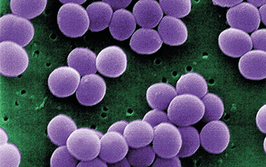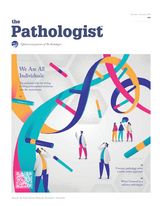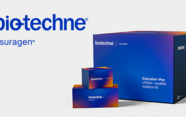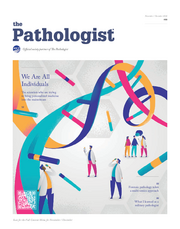
Brain food
A link between the gut microbiome and neurodegenerative disorders has been well established. But is there a link between gut bacteria and typical neurological development? Researchers have compared gut microbial taxa, cognitive function and brain structure in 381 children in the States (PMID: 38134274). The study, which used advanced learning models, showed that certain microbial species were markedly more or less prevalent in children with higher cognitive function. Correlations between taxa and size of different brain areas were also found. The report states, “These findings provide potential biomarkers of neurocognitive development and may enable development of targets for early detection and intervention.”
Pre-empting pre-eclampsia
Micro RNA (miRNA) on the surface of blood cells collected from pregnant patients has been found to differentiate those with pre-eclampsia – and even to predict its severity. The study, published in Science Advances (PMID: 38117879), discovered three relevant miRMA biomarkers using small RNA sequencing and an iterative machine learning method. Combining the miRNA biomarker information with results of an existing protein biomarker test resulted in increased sensitivity and specificity. Following validation of the three candidate biomarkers, the authors believe they will “allow for better clinical resource allocation, prevent low-risk patients from unnecessary admission and procedures, and increase understanding of their roles in pre-eclampsia disease pathogenesis.”
Financial pressures
Researchers in Australia have discovered a way to predict patients’ response to blood pressure medication – and they say it could save the Government billions of dollars. The study interrogated real-world data for links between a sodium-dependent genetic predisposition to hypertension, blood sodium levels, and blood pressure (PMID: 38131187). The findings could be used to predict a patient’s response to treatment that reduces sodium or another treatment targeted to their genetic risk profile. Murray J. Cairns, who led the research, claimed in a statement that one in three Australian adults has hypertension, adding that a “25 percent reduction in the prevalence of hypertension could save the Australian Government $34 billion per year.”
A measly sum
With measles vaccination rates on the decline, and cases increasing, the risk of disease from a mutated form of the virus that spreads through the brain is also on the up. A team at Mayo Clinic have been able to map the progress of subacute sclerosing panencephalitis (SSPE) across the brain of an adult patient who caught measles in childhood (PMID: 38127684). Through genetic sequencing of the viral RNA from 15 areas of the diseased brain they tracked viral mutations and spread over time. “This horrible disease can be prevented by vaccination. But now we are in the position to study SSPE with modern, genetic sequencing technology and learn more about it,” said co-author Iris Yousaf.
Beat it
A new classification system for coronary microvascular diseases has been proposed by a Chinese expert consensus (1); four major types and nine subtypes are detailed.
Bad air days
Inhalation of particulate matter containing cadmium can lead to respiratory damage, say researchers in the States (2). The findings will aid our understanding of how air pollution drives morphological changes.
All aquiver
Japanese jellyfish study reveals the creatures’ ability to regenerate damaged tentacles is due to blastema formation by repair-specific proliferative cells (3). Findings may inform studies into human regenerative abilities.
Dementia–cholesterol link
Elderly people with very high levels of HDL-C – or good cholesterol – have an increased risk of dementia, according to a study (4); the risk increased by 42 percent for those over 75 years old with HDL-C levels >80 mg/dL.
Combining my dual backgrounds in science and communications to bring you compelling content in your speciality.




















